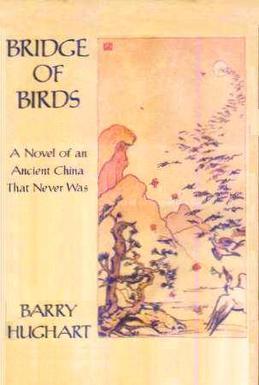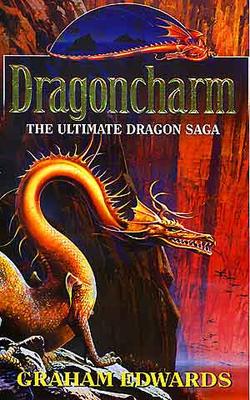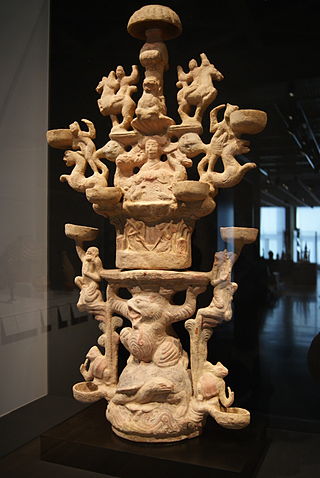Plot summary
The survivors from Dragoncharm have established a new dragon community on the island chain of Haven. Dragonstorm opens as Brace, Cumber and an ex-charmed dragon called Thaw lead an expedition to rescue the dragons still trapped in the canyon at Aether's Cross. Fortune and Gossamer remain on Haven, with their new daughter Aria. Fortune and his allies battle to prevent the community being split apart by the renegade Hesper.
Meanwhile, the basilisk Ocher is seeking out his lost companions. Once gathered, the six basilisks - known as the Deathless - plan one last wielding of charm to bring about their own destruction.
Brace and Cumber reach an ancient citadel built by the basilisks and inhabited by a blind ex-charmed dragon called Archan. The citadel's towers are mobile in time, constantly fading in and out of past, present and future. Archan seduces Thaw and imprisons the others. She has learned about the basilisks' plans and is scheming to steal their immortality.
The basilisks are gathering what is left of the world's magic. A giant river of charm forms in the sky, flowing to the north pole, which the dragons call the Crest of the World. Hesper taps into this charm and convinces many of the Haven dragons that the magic is back. The community splits apart as the river of charm causes a great storm. The whole world starts changing shape.
The shifting of the continents transports the whole of Haven island to Archan's citadel. Cumber and the others are rescued, but Fortune's daughter Aria is snatched by Archan and taken to the time-towers. The temporal effects cause Aria to grow to adulthood in the blink of an eye. Archan tricks Thaw into raping Aria, then kills him. Archan wants Aria to bear a perfect infant dragon to accompany Archan into immortality. She takes Aria to the north pole, ready for the ritual that will make her immortal.
Brace and Cumber's party journey to a land of glaciers where they find the skeleton of Aether, the troll after whom the canyon of Aether's Cross was named. All the basilisks meet at the north pole and perform the ceremony of the Gathering of the Deathless. Fortune arrives just in time to save Aria from Archan. The basilisks achieve their goal and Archan becomes immortal, but her body is destroyed. She disappears into an iceberg, where she remains trapped and helpless, yet unable to die.
All the basilisks are dead except Ocher, who is now mortal. Now life is precious, Ocher decides he wants to live a little longer. Brace arrives with the dragons he's just freed from Aether's Cross. Aria's egg brings wingless infant Wyrm into the world. The surviving dragons wonder if Wyrm represents what the future holds for their species, which is hovering on the brink of extinction.

Elric of Melniboné is a fictional character created by English writer Michael Moorcock and the protagonist of a series of sword and sorcery stories taking place on an alternative Earth. The proper name and title of the character is Elric VIII, 428th Emperor of Melniboné. Later stories by Moorcock marked Elric as a facet of the Eternal Champion.

Chinese mythology is mythology that has been passed down in oral form or recorded in literature throughout the area now known as Greater China. Chinese mythology encompasses a diverse array of myths derived from regional and cultural traditions. Populated with engaging narratives featuring extraordinary individuals and beings endowed with magical powers, these stories often unfold in fantastical mythological realms or historical epochs. Similar to numerous other mythologies, Chinese mythology has historically been regarded, at least partially, as a factual record of the past.

Virginia Dare was the first English child born in an American English colony.

The Eight Immortals are a group of legendary xian (immortals) in Chinese mythology. Each immortal's power can be transferred to a vessel (法器) that can bestow life or destroy evil. Together, these eight vessels are called the "Covert Eight Immortals" (暗八仙). Most of them are said to have been born in the Tang or Song Dynasty. They are revered by the Taoists and are also a popular element in secular Chinese culture. They are said to live on a group of five islands in the Bohai Sea, which includes Mount Penglai.
A half-elf is a mythological or fictional being, the offspring of an immortal elf and a mortal man. They are often depicted as very beautiful and endowed with magical powers; they may be presented as torn between the two worlds that they inhabit. Half-elves became known in modern times mainly through J. R. R. Tolkien's Middle-earth writings but have origins in Norse mythology. A half-elf appeared in Lord Dunsany's 1924 book The King of Elfland's Daughter.

Bridge of Birds is a fantasy novel by Barry Hughart, first published in 1984. It is the first of three novels in The Chronicles of Master Li and Number Ten Ox series. The original draft of Bridge of Birds is included in a special slipcased version of the omnibus collection, The Chronicles of Master Li and Number Ten Ox, released by Subterranean Press in 2008.

The Spiderwick Chronicles is a series of children's fantasy books by Tony DiTerlizzi and Holly Black. They chronicle the adventures of the Grace children, twins Simon and Jared and their older sister Mallory, after they move into the Spiderwick Estate and discover a world of fairies that they never knew existed. The first book, The Field Guide, was published in 2003 and then followed by The Seeing Stone (2003), Lucinda's Secret (2003), The Ironwood Tree (2004), and The Wrath of Mulgarath (2004). Several companion books have been published including Arthur Spiderwick's Field Guide to the Fantastical World Around You (2005), Notebook for Fantastical Observations (2005), and Care and Feeding of Sprites (2006). A second series, entitled Beyond the Spiderwick Chronicles, includes The Nixie's Song (2007), A Giant Problem (2008), and The Wyrm King (2009).
The flexibility of the Dungeons & Dragons (D&D) game rules means that Dungeon Masters (DM) are free to create their own fantasy campaign settings. For those who wanted a pre-packaged setting in which to play, TSR, Wizards of the Coast (WotC), and other publishers have created many settings in which D&D games can be based; of these, the Forgotten Realms, an epic fantasy world, has been one of the most successful and critically acclaimed settings. Many campaign settings include standard sword and sorcery environments, while others borrow Asian, Central American, swashbuckling, horror and even space-travel themes.

Dragoncharm is a fantasy novel written by Graham Edwards. The novel was first published in 1995 by Voyager Books (UK) and HarperPrism (US). It is the first book in the Ultimate Dragon Saga trilogy, and its sequels are Dragonstorm and Dragonflame.
The Deverry Cycle is a series of Celtic fantasy novels by Katharine Kerr set in the fictional land of Deverry. As of February 2020, sixteen books have been published in the series.

Dragonflame is a fantasy novel written by Graham Edwards. The novel was first published in 1997, by Voyager Books (UK) and HarperPrism (US). It is the final book in the Ultimate Dragon Saga trilogy. The book contains loose connections, and foreshadowing to Edwards' later series, the Stone and Sky trilogy.

Stone and Sky is a fantasy novel written by Graham Edwards. The novel was first published in 1999 by Voyager Books (UK) and HarperPrism (US). It is the first book in the Stone trilogy, which also includes Stone and Sea and Stone and Sun. The trilogy is a follow-up to Edwards' Ultimate Dragon Saga trilogy, and is loosely connected via various plot threads.

A xian is any manner of immortal, mythical being within the Taoist pantheon or Chinese folklore. Xian has often been translated into English as "immortal".
Angela Elwell Hunt is a prolific Christian author, and her books include The Tale of Three Trees,The Debt,The Note, and The Nativity Story, among others.
Guardians of Time is a trilogy of novels written by Marianne Curley. The plot of the trilogy consists of the Guardians of Time, trying to protect the past, present, and future by traveling into the past to thwart their enemies, and the Order of Chaos, who are trying to change past events to give themselves more power.

The Kunlun or Kunlun Shan is a mountain or mountain range in Chinese mythology, an important symbol representing the axis mundi and divinity.

Taoist coin charms, or Daoist coin charms are a family of categories of Chinese and Vietnamese numismatic charms that incorporate elements of the Taoist religion. Taoist coin charms come in various shapes, sizes, and formats and can contain inscriptions or wholly pictorial designs. While a large number of Taoist coin charms have their inscriptions written in traditional Chinese characters, a subset of Taoist coin charms have inscriptions written in Taoist "magic" writing. In these countries similar numismatic charms existed for Buddhist and Confucianism, and at times Taoist coin charms would also incorporate symbolism from these other religions.
J. R. R. Tolkien repeatedly dealt with the theme of death and immortality in Middle-earth. He stated directly that the "real theme" of The Lord of the Rings was "Death and Immortality." In Middle-earth, Men are mortal, while Elves are immortal. One of his stories, The Tale of Aragorn and Arwen, explores the willing choice of death through the love of an immortal Elf for a mortal Man. He several times revisited the Old Norse theme of the mountain tomb, containing treasure along with the dead and visited by fighting. He brought multiple leading evil characters in The Lord of the Rings to a fiery end, including Gollum, the Nazgûl, the Dark Lord Sauron, and the evil Wizard Saruman, while in The Hobbit, the dragon Smaug is killed. Their destruction contrasts with the heroic deaths of two leaders of the free peoples, Théoden of Rohan and Boromir of Gondor, reflecting the early Medieval ideal of Northern courage. Despite these pagan themes, the work contains hints of Christianity, such as of the resurrection of Christ, as when the Lord of the Nazgûl, thinking himself victorious, calls himself Death, only to be answered by the crowing of a cockerel. There are, too, hints that the Elvish land of Lothlórien represents an Earthly Paradise. Scholars have commented that Tolkien clearly moved during his career from being oriented towards pagan themes to a more Christian theology.












